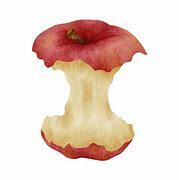Hello again! Without any further ado, let’s get down to the core subject for this week’s HDD blog. The core is the center, innermost or most essential part of anything. Since the HDD blog normally stays within the subject matter of health, let’s talk about your core.
WHICH CORE?
Today’s blog won’t cover the core of an apple, the earth, an organization, belief, or prediction. The core we will discuss is the one that covers the mid-section of your body. What are your core muscles, where are they located and what are they responsible for?
DID YOU KNOW…
Your core muscles are not just the proverbial “six pack.” In fact your core muscles actually wrap around your entire torso front to back. Your front core muscles are the rectus abdominis known as the “six-pack” which is incidentally invisible to the naked eye if you sport an extra few pounds. These are the muscles that support and stabilize the trunk allowing for movement and protecting internal organs, but wait, that’s not all.
THERE’S MORE
The transverse abdominis are the deepest muscles and act like a corset to stabilize the spine and pelvis. The internal and external obliques are on the sides of the abdomen and help with rotation and side-bending. The diaphragm plays a role in breathing and works the abdominal and pelvic floor muscles to stabilize the core.
GO BACK
Let’s start with the posterior or back muscles. The erector spinae are located along the spine and help with posture and extension of the back. The multifidus are small deep muscles along the vertebrae that stabilize the spine.
NO BUTTS ABOUT IT
Your butt muscles aka your gluteus maximus, medius, and minimus help with hip movement and pelvis stabilization. In addition your iliopsoas muscle is deep in your lower torso the plays a critical role in hip flexion, posture and stabilizing the spine.
WHY DOES THIS MATTER?
Now that you have endured today’s anatomy lesson brought to us courtesy of AI, let’s discuss why these muscles matter. Weak core muscles can contribute to falls especially in older adults which are the leading cause of injury in folks over 65. Strong core muscles support posture, enhance balance, help us bend lift, twist and reduce the risk of injury. Ask any athlete how important it is to have strong core muscles.
HAVE YOU EVER…
Have you ever hurt your back by tying your shoe or getting out of bed? It is actually fairly common. These simple actions strain your lumbar discs and ligaments especially if your core isn’t strong and engaged which can lead to strain, sprain, muscle spasm or even a herniated disc.
BOTTOM LINE
You actually strengthen your core not just during workouts but every time you move with intention, breathe correctly and maintain posture. Stay healthy, stable and remember to strengthen and engage your core. At HDD we can’t help with your core but we can help with diagnostic ultrasound. Call us at 505-350-3397.

